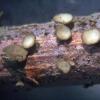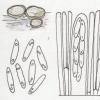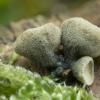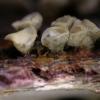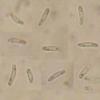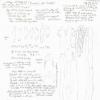
21-12-2013 19:06
 Zuzana Sochorová (Egertová)
Zuzana Sochorová (Egertová)
Good evening, my friend gave me a collection of th

21-12-2013 21:03
 Amadej Trnkoczy
Amadej Trnkoczy
Hi! I would appreciate very much if somebody kn

21-12-2013 20:31
 Amadej Trnkoczy
Amadej Trnkoczy
Hi!Would appreciate very much if somebody knowledg

19-12-2013 14:25
Hi to all Can you help me with these papers on Ar

19-12-2013 08:08
 Christian Lechat
Christian Lechat
Chers collègues Ascofrance a été fondé en 20

19-12-2013 08:11
 Christian Lechat
Christian Lechat
Dear colleagues Ascofrance was founded in 2003 a

19-12-2013 15:26
Peter ThompsonHello Everyone,I have been considering an ascomyce

18-12-2013 18:02
Pollard AdamI have been trying to identify this fungus and hav

18-12-2013 18:13
 Yannick Mourgues
Yannick Mourgues
Bonjour à tous.Sur branche de Fagus décortiquée
Besoin d'aide
Gilbert MOYNE,
22-12-2013 18:35
Apothécies 3-5 mm de diamètre, courtement stipitées, à hymenium gris verdâtre livide, surface externe d'aspect grafinement granuleux, gris olivâtre (non formé de cellules globuleuses).
Asques cylindracés, un peu atténués à la base, 45-55 x 5-6 µm, crochets +, J- (pas vu de réaction avec IKI), contenant 8 spores bisériées.
Paraphyses cylindriques, souvent divisées aux cloisons, non élargies au sommet (3 µm), hyalines, sans goutte, non réfringentes.
Spores cylindriques, hyalines, kisses contenant quelques minuscules gouttelettes vers les pôles, 6-8 x 2-2,5 µm
Je ne sais pas bien où aller. Merci de votre aide.
Et bon Noël
Gilbert
Gilbert MOYNE,
22-12-2013 18:43
Re : Besoin d'aide
Lire : d'aspect finement granuleux....
Hans-Otto Baral,
22-12-2013 19:39

Re : Besoin d'aide
Mon cher Gilbert
I think you have Encoelia glauca! A rare species that I never found myself.
Here is a photo by Jens Petersen, from Ireland (leg. Andreas).
I think everything fits. The excipulum is of isodiametric cells but difficult to study because interspersed with abundant exudate granules.
Was it an attached twig or lying on the ground?
Zotto
I think you have Encoelia glauca! A rare species that I never found myself.
Here is a photo by Jens Petersen, from Ireland (leg. Andreas).
I think everything fits. The excipulum is of isodiametric cells but difficult to study because interspersed with abundant exudate granules.
Was it an attached twig or lying on the ground?
Zotto
Gilbert MOYNE,
22-12-2013 20:48
Re : Besoin d'aide
Bonsoir et merci de ta réponse Zotto. C'était un rameau mort, encore aérien, fixé aux branches, pas sur le sol.
L'extérieur me paraît beaucoup moins granuleux que sur la photo jointe. plutôt poudré, comme recouvert d'une fine farine, pruineux.
Gilbert
L'extérieur me paraît beaucoup moins granuleux que sur la photo jointe. plutôt poudré, comme recouvert d'une fine farine, pruineux.
Gilbert
Hans-Otto Baral,
22-12-2013 20:55
Gilbert MOYNE,
22-12-2013 23:06
Re : Besoin d'aide
Merci Zotto.
Je revois tout ça demain
Gilbert
Je revois tout ça demain
Gilbert
Gilbert MOYNE,
23-12-2013 09:56
Re : Besoin d'aide
Oui, des granules entre les paraphyses.
Tout semble assez bien correspondre. Donc Encoelia af fuckelii .
Merci beaucoup et bon Noël à tous
Gilbert
Tout semble assez bien correspondre. Donc Encoelia af fuckelii .
Merci beaucoup et bon Noël à tous
Gilbert
Hans-Otto Baral,
23-12-2013 10:40

Re : Besoin d'aide
Oh, sorry Gilbert, I wrote aff. fuckelii on the drawing before I came to the conclusion that it must be E. glauca. So it is E. glauca. This species has also an anamorph, but that was only once present between the apothecia.
Zotto
Zotto
Gilbert MOYNE,
23-12-2013 11:04
Re : Besoin d'aide
D'accord, c'est noté.
merci encore Zotto.
Gilbert
merci encore Zotto.
Gilbert
